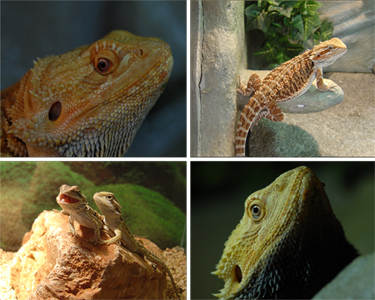
Pogona Vitticeps / Bearded dragon
The bearded dragon has the scientific name Pogona vitticeps. This first name Pogona is the genus name and is derived from the greek word pogon, that means ' beard '. The second name vitticeps is a generic name, this means ' striped head '.
However, the used to have another scientific name because the species was still placed in the genus Amphibolurus. This outdated name was Amphibolurus vitticeps. Also the scientific name Acanthodraco vitticeps proposed but also this name is considered as outdated. The bearded dargon is not the only species that belonging to the genus Pogona, there are seven other species.
All bearded dragons are referred to the genus Pogona, such as Pogona Vitticeps or Pogona henrylawsoni (dwarf bearded Dragon), which is smaller and a less highly developed beard. We will only described the Pogona Vitticeps (Bearded Dragon), the most famous of al.
Legalization
Virtually all bearded dragons available in America are captive bred, as Australia has strict laws against exportation of its wildlife.
General information:
- Latin name: Pogona Vitticeps
- Dutch: Baardagaam
- Common name: Bearded Dragon
- Length: ± 50 (body avg. 25 cm, tail up to 31 cm long)
- Age: ± 10 - 15 years
- Origin: Australia
- Habitat: desert regions
- Housing in captivity: terrarium
- Temperature: 30°C to 40°C
- Sexual maturity: ± 8 months
- Ready for mating: ± 1,5 years
- Number of eggs per clutch: 15 to 30 eggs
- Gestation period: ± 1 month
- Incubation hatching: 50 to 60 days
- Hatching temperature: 28°C to 30°C
- Food supply: plant foods and animal feed
- Nutritional supplements: calcium and vitamin
